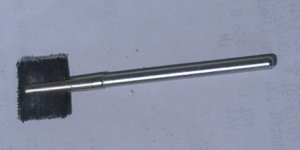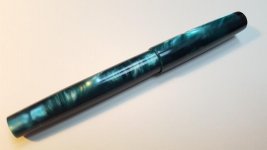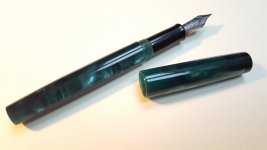Ian I like your work on this pen, there is nothing wright or wrong with a kit pen or so called kitless like yours. They both serve their purpose. You will find it another ball game if you like beautiful timber. Triple start does seem a way to go few users would put up with 9 turns to remove and restore the cap.
Congratulations on your first of this making for you I see a great pen.
Peter.
Thanks Peter, I ultimately want to produce a timber kitless (with acrylic section and acrylic threaded inserts) but one step at a time!






